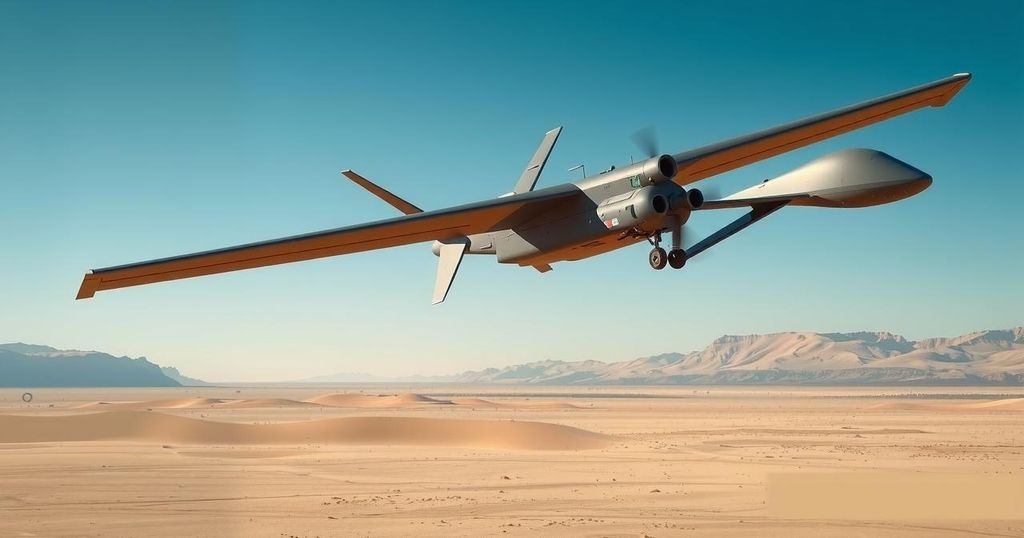The Impact of Russia’s Drone Warfare on Regional Conflicts and Military Strategy
This article analyzes Russia’s drone advancements as evidenced by their recent successes in the Kursk region against Ukraine. It explores the implications for Iran’s proxies, particularly following the Hamas attacks on Israel, highlighting the critical role that drones play in contemporary warfare and logistics.
Russia is currently demonstrating noteworthy advancements in drone usage on the battlefield, particularly evident in the recent developments in Ukraine. Following Ukraine’s withdrawal from the strategic Kursk region, attributed to effective Russian drone deployment, there are implications for Iran’s proxies targeting Israel post the October 7 Hamas attack. Russian acquisition and employment of Iranian Shahed kamikaze drones highlight this evolving military strategy and its potential consequences for regional conflicts.
The significant insights from the BBC article reveal that fundamental military tactics led to Ukraine’s setbacks. The report illustrates how Kyiv’s deployment of approximately 12,000 troops, alongside the reliance on a singular supply road, facilitated Russian forces in encircling and diminishing Ukrainian positions. The downfall of this logistical approach mirrors the historical retreat challenges faced by the Iraqi army.
Moreover, the report asserts that Russian forces utilized their superior drone units effectively, employing kamikaze drones and first-person-view (FPV) drones that rendered traditional electronic countermeasures less effective. Ukrainian soldiers expressed their struggle against an omnipresent drone threat, indicating a stark loss of aerial advantage compared to earlier phases of the conflict.
Russia’s tactic of operating drone swarms—deploying multiple drones simultaneously to target enemy assets—has proven effective, similar to recent outcomes observed in the Nagorno-Karabakh conflict. The persistent drone activity significantly hindered Ukrainian routes, and soldiers reported an overwhelming presence of Russian drones in constant motion.
This increasing reliance on advanced drone technology signifies a strategic evolution in military engagements, notably influencing not only the Ukrainian landscape but potentially extending to Middle Eastern battlefields. The ramifications could influence Israel’s military strategies, particularly in the context of Hamas’s recent drone strikes, in which Russia’s and Iran’s tactical observations may play a critical role.
In conclusion, the developments in the Kursk region underscore the transformative role of drone warfare in modern military engagements. Russia’s deployment of advanced drone tactics has directly impacted Ukraine, setting a precedent that may resonate in Middle Eastern conflicts involving Iranian proxies. As military strategies evolve, observing these trends becomes crucial for nations like Israel to maintain their technological edge.
Original Source: www.jpost.com




Post Comment